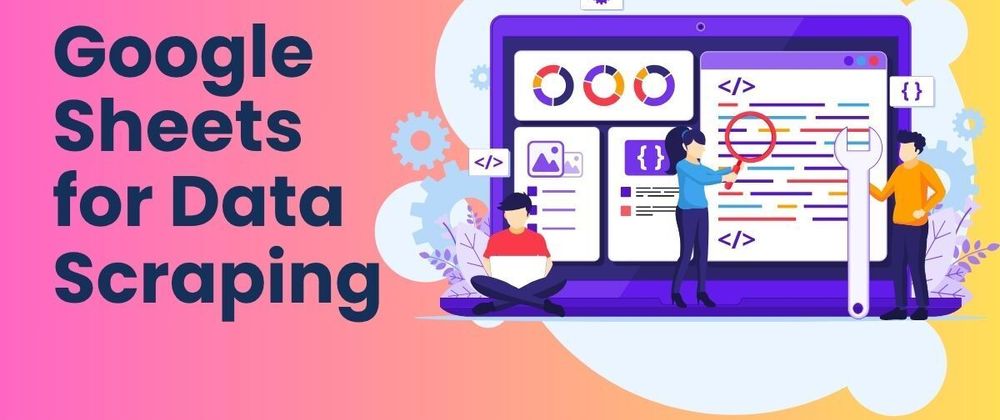In this era dependent entirely on data, companies have to fast-track data extraction activities. Web scraping would help keep the competition price-monitoring, product availability, or lead generation. And, luckily, you need not learn coding or buy expensive software; Google Sheets is fully capable of acting as your web scraping console. Here in this article, a reputed web scraping firm explains the working of it and how Excel automation-assisted AI and RPA Agency can carry it further.
What is a Web Scraping Dashboard?
Imagine a web scraping dashboard as a very friendly visual interface. It scrapes real-time data from websites and presents the same data in a well-structured, readable manner. Such dashboards assist businesses in keeping an eye on dynamic information in real time, identifying patterns, and making informed decisions. Your dashboard will thus:
Live and interactive
Accessible from any device
Easy to customize and collaborate on
Cost-effective and code-free
Why Choose Google Sheets?
Google Sheets is more than a spreadsheet; it's a flexible, collaborative workspace that updates in real-time. Here's why it's perfect for light web scraping tasks:
No software installation needed
Works in the browser with cloud storage
Built-in features to pull live web data
Supports data sharing, charts, and automation
Free to use with a Google account
If you’re looking for a low-risk way to dip your toes into automation and scraping, Google Sheets is the perfect starting point.
What Can You Track Using Google Sheets?
With the right setup, Google Sheets can help you collect and track the following types of public web data:
Product prices from e-commerce sites
Stock availability or sold-out notices
Real estate listings and property prices
Blog post titles and publication dates
Cryptocurrency or stock market prices
Airline ticket prices or hotel rates
Government or academic datasets
Job postings and freelance opportunities
For businesses that rely on fast-moving or competitive data, this can be a game changer.
How Does It Work Without Code?
Google Sheets has built-in data import tools that let users extract tables and lists from public websites without needing technical knowledge. These functions allow you to paste a website link into a cell and display the updated data automatically often within seconds.
You don’t need to know HTML, programming, or scraping tools. It’s as easy as:
Opening a new Google Sheet
Entering a web link in a cell
Selecting the table or list you want to display
Letting Sheets fetch and show the data live
Step-by-Step: Building a Web Scraping Dashboard in Google Sheets
Here’s how to turn your spreadsheet into a live monitoring tool:
1. Define Your Objective
Start by identifying what data you want. Are you tracking product prices? Monitoring news headlines? Collecting customer reviews?
2. Create a Data Table
In your sheet, set up headers like:
Website Name
Target URL
Data Type (e.g., Price, Name, Stock)
Extracted Data
One sheet may contain several websites, while each category of data has one sheet (e.g., Competitors, Products, Trends).
3. Connect with Data
Google Sheets pulls tables or lists from nearly all websites. After you provide the source URL, it tries to display the requested data. The only thing to check is that the data is publicly visible, and the website is not setting up an anti-web scraper mechanism.
4. Organize and Visualize
Add simple formatting, filters, or conditional color codes to emphasize price changes, statuses, or rankings. Complement that with charts, pivot tables, or graphs of your own to visualize trends on your dashboard.
When to Go Beyond Google Sheets
While Google Sheets is a powerful beginner tool, its limitations include:
Inability to scrape JavaScript-heavy websites
No support for logins or password-protected pages
Occasional delays in auto-refresh
Limited control over scraping frequency
Risk of being blocked by websites
When these limitations interfere with your needs, it’s time to upgrade to a more robust setup. That’s where professional services come in.
How a Web Scraping Company Can Help
A dedicated web scraping company can build advanced solutions tailored to your goals, offering:
Scalable scraping across thousands of pages
Bypass of anti-scraping mechanisms legally and ethically
Clean, structured datasets
Scheduled scraping with alert systems
Integration with CRMs, dashboards, or databases
Enhancing the Dashboard with Automation and AI
Depending upon automation and AI services, make your web scraping dashboard smart business software:
Excel Automation Services
Automate the conversion of scraped data into Excel reports, dashboards, and summaries for immediate analysis by sales, marketing, and finance teams.
AI Chatbot Development Services
Provide an interface to your data by letting your team or customers ask questions from the chatbot. The AI Bots will give instant answers to any inquiry regarding pricing or stock alerts going through your Google Sheet.
RPA Custom Development
With Robotic Process Automation, scraped data can trigger actions like:
Sending emails
Updating CRMs
Placing purchase orders
Monitoring compliance
An expert RPA agency can build bots to automate full workflows—starting with scraped data and ending in meaningful actions.
Conclusion
Google Sheets provides a simple, code-less approach to building web scraping dashboards, just perfect for a startup, for marketing or for analysis in real-time. Once scaling is required, it can be combined with Excel automation, AI chatbot development services, and RPA custom workflows. Another alternative for the sake of security and scalability is settling on a web scraping company or RPA agency trusted by your business goals.





Top comments (0)